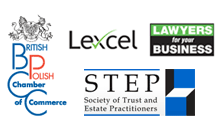Much has been made of the Capital Gains Tax (CGT) changes, announced in the pre-budget report in October, regarding the taxation of business assets, due to the abolition from 6 April 2008 of ‘taper relief’. However, the CGT position regarding non-business assets will also change significantly from that date.
At the moment, CGT is payable on gains exceeding the annual ‘CGT-free allowance’ (currently £9,200) in any year. The effective rate is the marginal Income Tax rate of the taxpayer, which means the CGT payable can be as much as 40 per cent of the chargeable gain. From 6 April 2008 CGT will be payable at a flat rate of 18 per cent.
However, one big change is that CGT ‘indexation relief’ will be abolished completely. This will greatly increase chargeable gains on assets which were acquired many years ago. At the moment, indexation relief acts to remove the effect of inflation from the date of acquisition (or 31 March 1982 if the asset was acquired prior to that date) to the date of disposal of the asset by applying an uplift to the notional cost. Although indexation relief stopped when taper relief was introduced, the indexation relief up to April 1998 (when the Retail Price Index was 162.6) was preserved, which significantly reduced the chargeable gains.
If you have assets the disposal of which would trigger CGT, you should give consideration to your tax position. Assets in this category would include stocks and shares, second homes and so on. Your principal private residence continues to be exempt from CGT.
|

